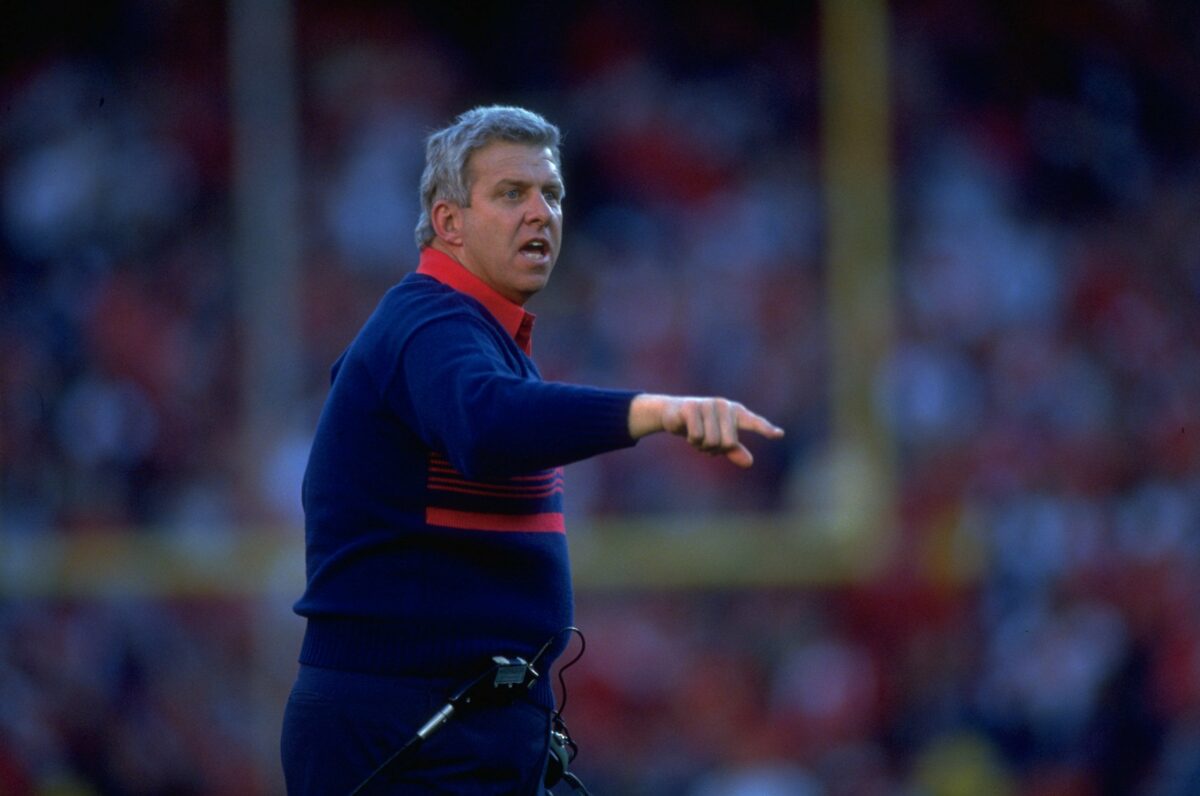[anyclip pubname=”2103″ widgetname=”0016M00002U0B1kQAF_M8036″]
New York Giants Hall of Fame coach Bill Parcells is widely known as one of the foremost coaches in the history of the NFL.
That didn’t happen in a vacuum. Parcells took knowledge from almost every coach, player, executive, and scout he rubbed elbows with on his way up the ladder.
In a piece for The 33rd Team published last September, Parcells explains his philosophy about ‘hidden yardage’ and how it affects the outcome of the game. It was something he picked up from Hall of Fame coach Sid Gillman by way of another longtime head coach and friend, Dan Henning.
The premise is that 100 yards of field position should equate to seven points. The more I thought about it, the more I asked myself, “If this yardage is so important, where is it coming from? Let’s take the entire scope of the yardage and evaluate it.” So, I did.
To explain what I found, we’re going to start with the obvious: total offense and total defense. So, let’s say a team has 350 yards of offense in a game. According to that premise, it should have 24 points. Let’s say that same team’s defense gives up 300 total yards. Based on that premise, the opponent should have 21 points.
Those are the obvious yards. Where do the hidden yards come from? Parcells explained.
Now, here is how the hidden yardage affects the outcome, especially when you consider half the games are decided by seven points or less, and a quarter are decided by three points or less. People don’t look at the penalty differential or the net-punting differential. People don’t look at the average start of possession either.
Those are hidden yards, and they all equate to points.
Parcells went on to elaborate and broke things down mathematically. He explained how the aforementioned penalty differential, net-punt differential and starting field position could equate to more or fewer points for teams who had the same amount of total yards.
If each team had 350 total yards but one side had worse differentials and starting field position, odds are they would lose the game.
This explains why Parcells always talked about the game in thirds — offense, defense and special teams — and why he built his rosters the way he did. He would always stress the importance of each and how a team can lose games if just one of them fails to perform.
That is why individual statistics never meant much to Parcells. Just his team’s performance as a whole. He was the one to coin the NFL Scouting Combine the ‘underwear Olympics’ and that it was not the determining factor it is now.
[lawrence-related id=711535,711522,711507]
[affiliatewidget_smgtolocal]
